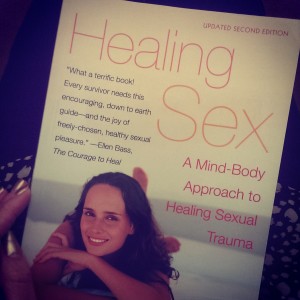This should be required reading in high school. I mean it. I decided this when I was reading it for the first time in one of my couples therapy courses in grad school, because I suddenly found myself overflowing with insight into a bunch of my old friendships and relationships. Every single person who walks into my office does so because of something that is relational at the root. I strongly believe that studying relationships in our formative years would go incredibly far in creating more ease and fulfillment throughout adulthood.
Psychologists Ellyn Bader and Peter Pearson walk you through the stages that every relationship goes through. They are a direct parallel to the work of Mahler, and Erikson, both of which many of you will already been familiar. Because the book is written for professionals on how to use a developmental model in couples therapy, it’s packed with case examples, which I believe is why it’s readable by anyone. Each point is driven home with a felt sense of learning about real people.
One of the major gems is in realizing that a lot of people don’t effectively make it property through separation and differentiation. Differentiation is the process of determining, on a very deep level, yourself from another. It results in a healthy expectation of differences, and the belief that the connection will sustain through working them out. Holy shit is that hard! But it’s really important. The muscle needs to grow properly, so that it can be used properly when it’s needed later.
But because a bunch of us still have differentiation work left to do, it’s extra difficult when it comes up in our relationships. And it comes right after symbiosis, which is that amazing cocooning time of “we are one.” It just isn’t fair that after months of that you find out something about the other person that devastates you. This is why it’s the stage where a lot of couples break up. Differences are hard enough to negotiate without lingering beliefs about how they’re inherently dangerous, and will result in complete disconnection. That’s why we gotta process that shit! A couple may still break up, but instead of doing it over distress at the process and past triggers (which we are rarely conscious about without some good therapy), it can be about the reality of now.
Many of the other learnings are similar in that they are as near to cause and effect as you can get with psychology. The model grounds you in understanding what is trying to be worked out, and encourages progress by laying out the sorts of practices that will get you what you need.
How to Read It-
Because this book is written as a guide for therapists working with couples, it’s heavy on case examples, and therapeutic interventions. Many of my clients have enjoyed getting this kind of psychoeducation about the process. But you may also find that hearing about other people and techniques isn’t for you, as it’s a whole lot of clinical stuff. If that’s the case, I recommend reading the first two chapters, the chapter(s) covering the stages you suspect you’re in, and the frequently asked questions in the back.
What To Do With What You Learn-
As you read, remember that you needn’t be in relationship now, nor do you need to have ever been in a romantic relationship in order to benefit from this learning. We are invited into these stages with everyone we encounter- our friends, therapist, co-workers, teachers, everyone. Consider which parts you’re adept at navigating, and where you tend to get stuck, and then put your new knowledge into practice. This book is full of wisdom, but it’s not enough to simply understand concepts. If you aren’t already in therapy, find someone to work with so that you can move through those stuck places. It is one of the very best places for exploring relationships, because the therapist-client relationship is a real one. But better yet, it’s one in which you get to do direct exploration. It is real-time exploration of how you are, and practice for how you want to be with others. We are hurt in relationships, and relationships are exactly where we heal.
